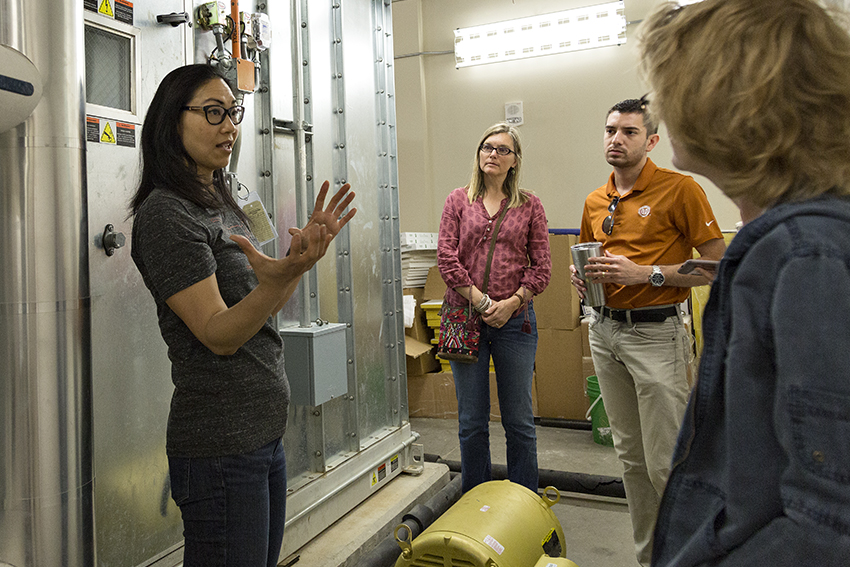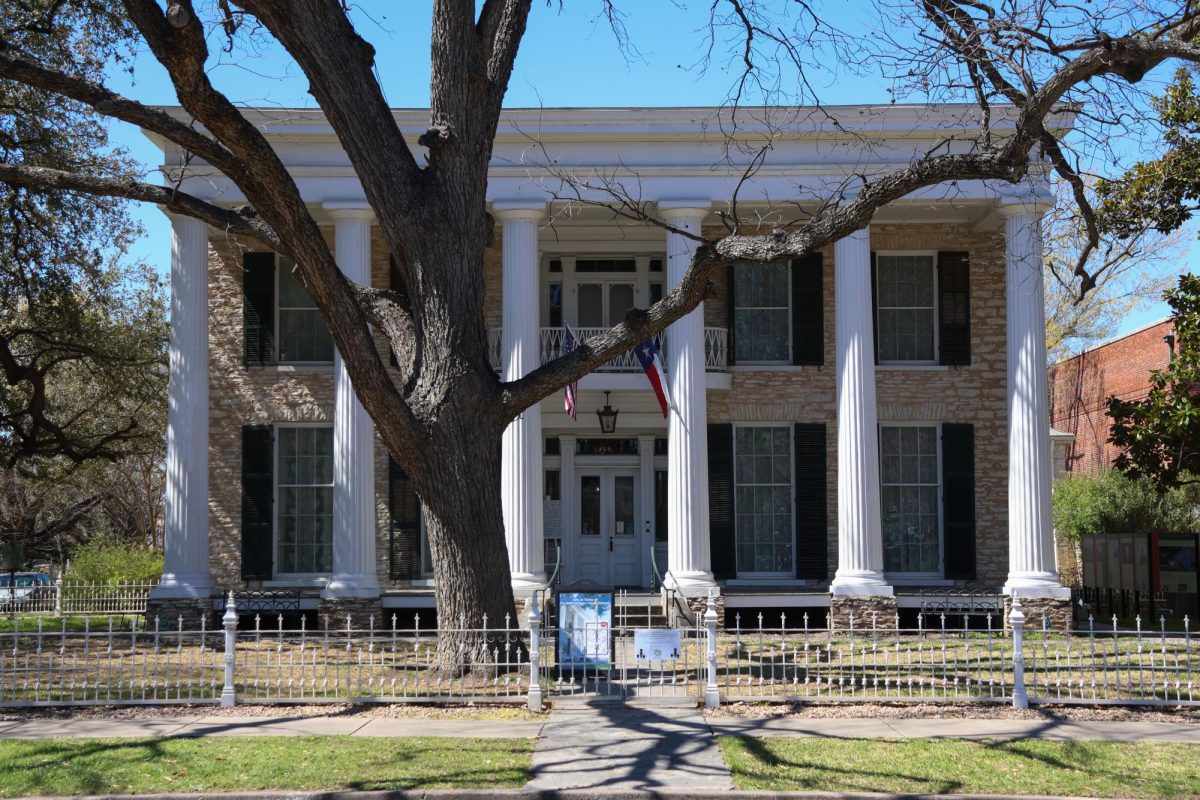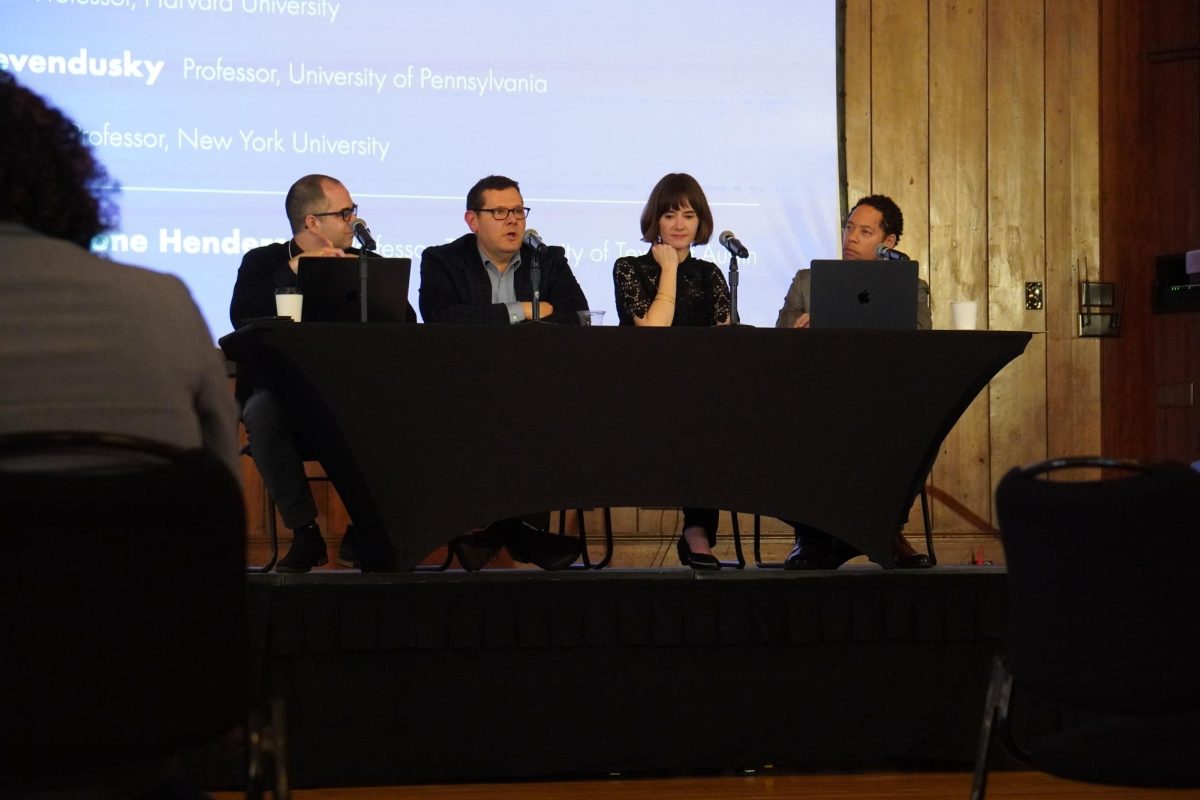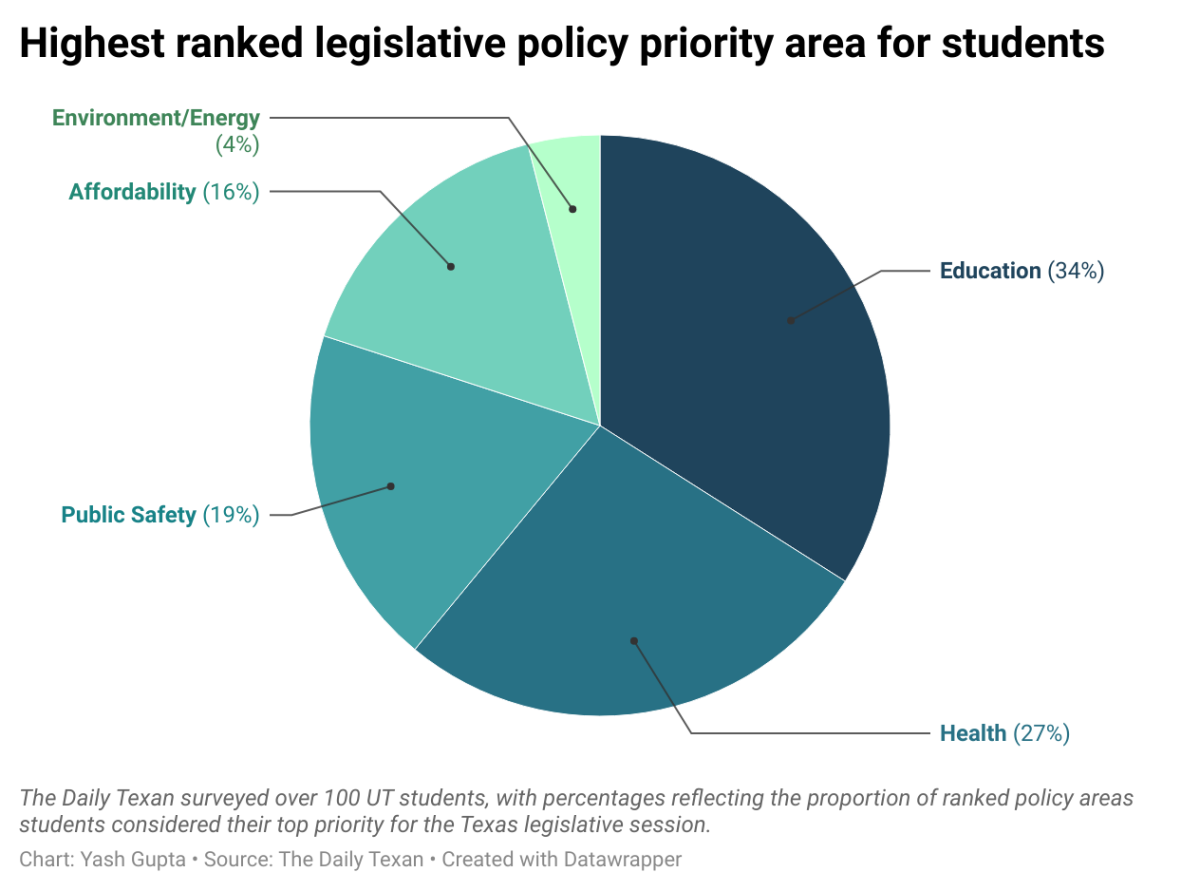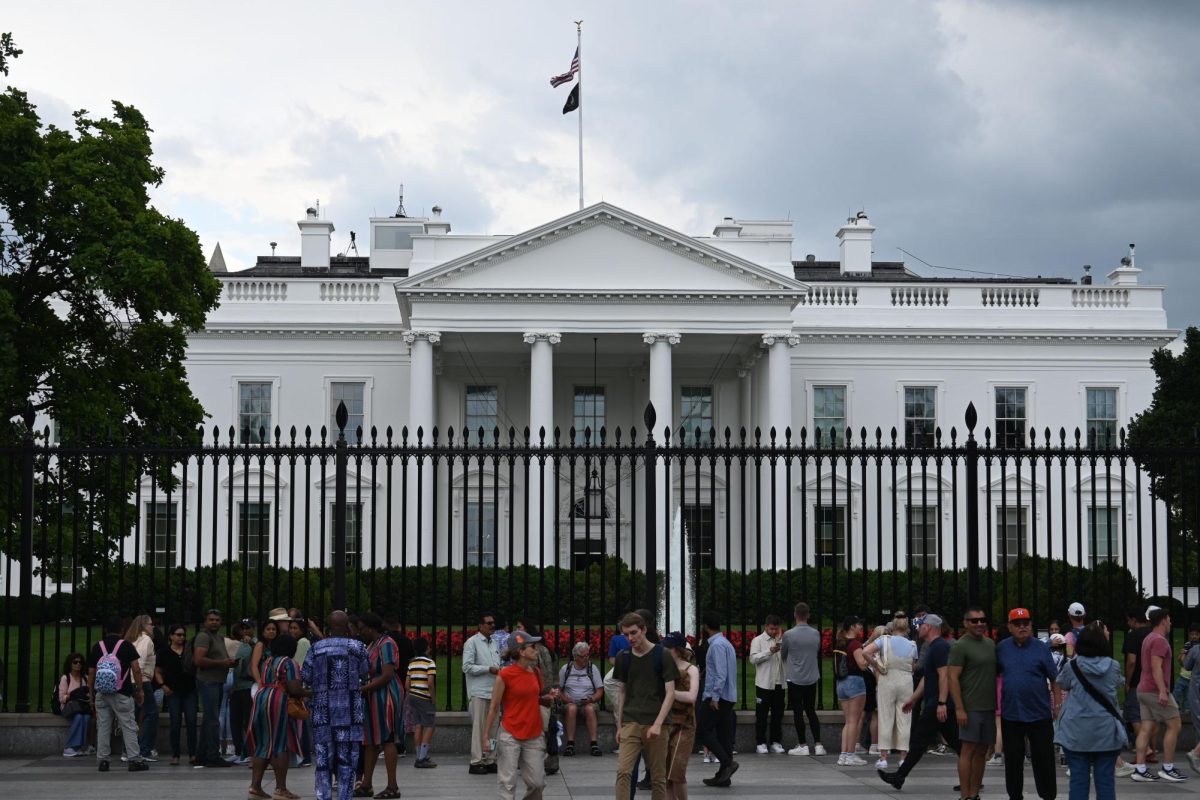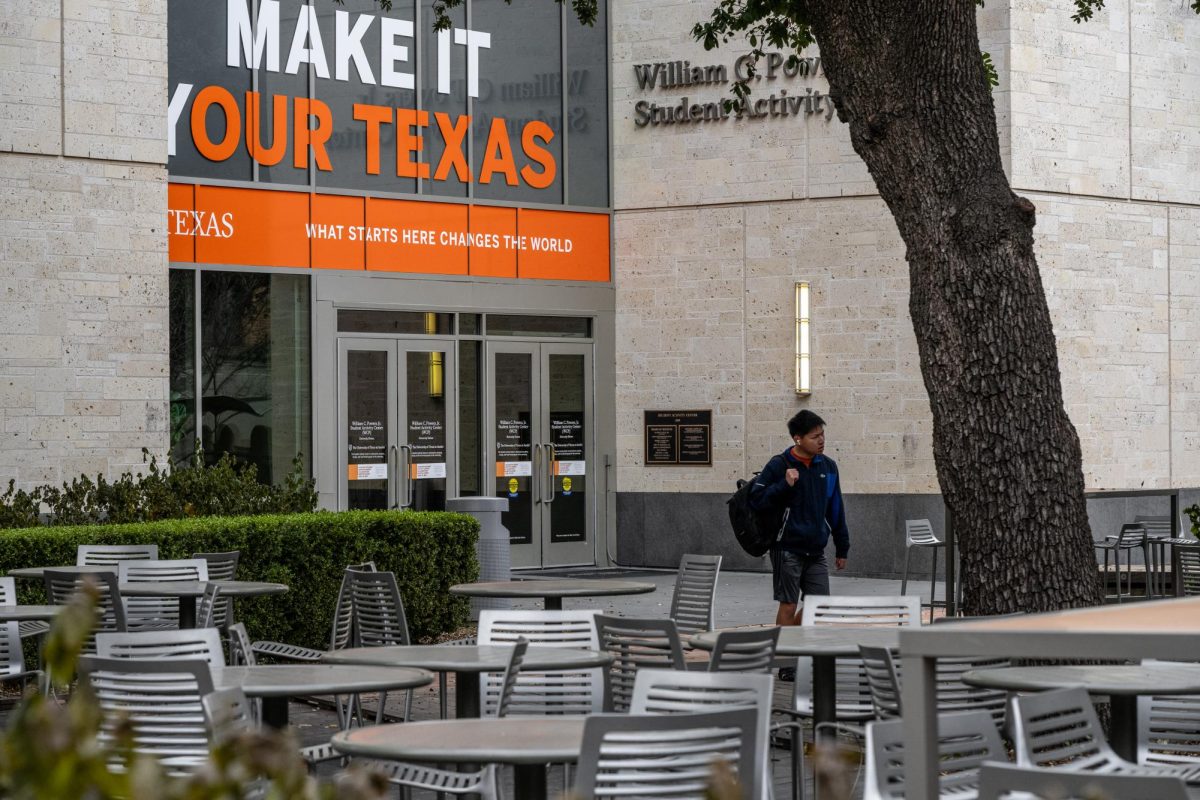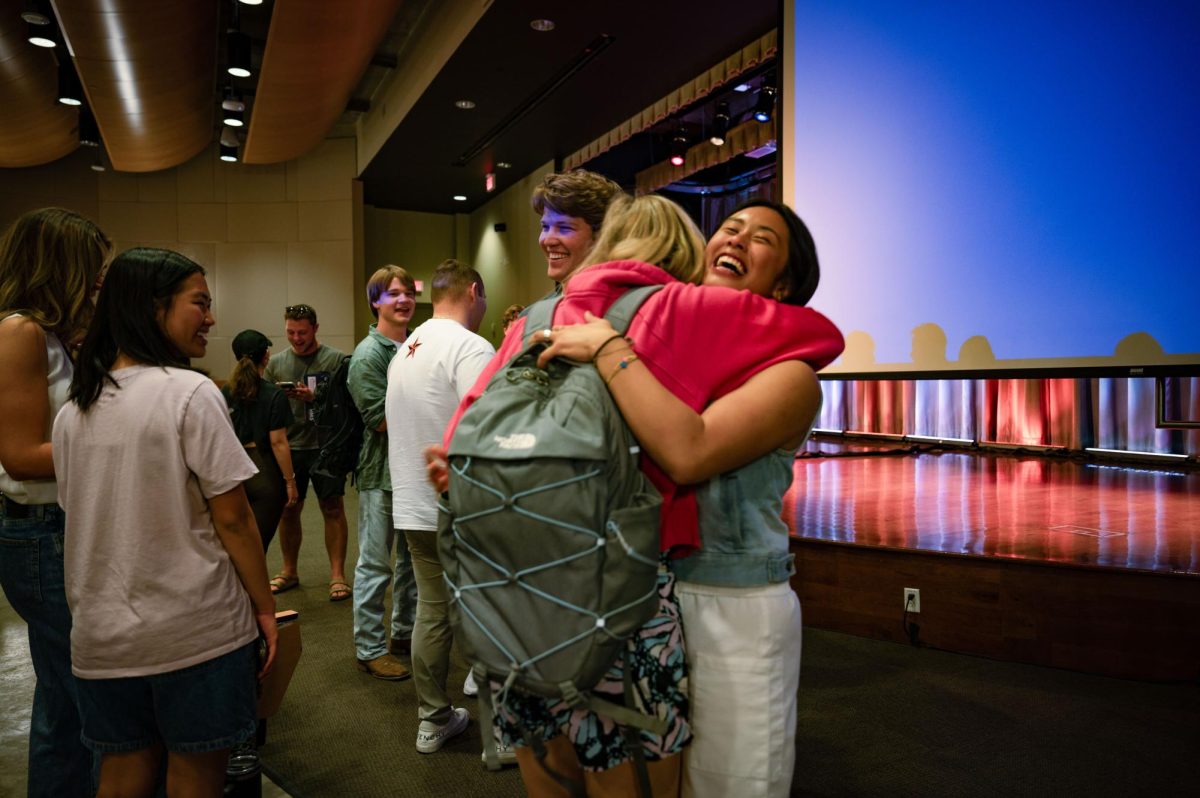The newest buildings on UT-Austin’s campus with their glassy, industrial interiors are an ode to modern elegance. Not as apparent, however, are the structural innovations tucked within these buildings that aid in campus sustainability efforts.
Energy Steward Grace Hsieh led a tour of the Belo Center for New Media’s energy efficient features on Friday as part of the Office of Sustainability’s Earth Month education.
Upon its 2012 completion, Belo achieved a Gold certification through the Leadership in Energy and Environmental Design, a rating system which evaluates buildings through seven categories, such as indoor environmental quality and innovative design.
“All the new buildings at UT are supposed to be at least LEED silver certified,” Hsieh said.
Hsieh works with a group of seven people with the end goal of reducing energy consumption by 20 percent before 2020. They have recorded an 18 percent reduction as of this year.
To highlight innovative features contributing to the sustainability effort, the tour group followed Hseih to the back of the BMC, coming face to face with four gigantic aluminum cisterns.
“The landscaping (at Belo) is all water-efficient,” Hseih said. “The cistern collects rainwater from the roofs and condensate from the AC units.”
Hseih then lead the tour through a back-door to a sealed-off concrete room containing Belo’s air handlers, where outside air is brought in for cooling or heating.
“Another big saver is the air-handling schedule, when the fans decrease by 30 percent during the hours the building is least occupied,” Hseih said. “We can also do what is called a supply air temperature reset, which is when the building resets to a comfortable level based on outside temperature.”
Because Belo is fully digitized, Hseich and her group were able to evaluate aspects such as plug load and temperature on a room-by-room level.
During the walk, Margo Shaw, administrative associate of KUT radio, said her offices stay at an uncomfortably cold temperature, and Hseih said she would work with her in correcting this problem.
“(The talk) was extremely informative, and it was great to learn about the cost savings and efficiencies of the building,” Shaw said.
Kristin Phillips, communications coordinator at the Office of Sustainability, said the Earth Month education efforts are good ways to get the community to think about sustainability.
“Our goal this month is to raise awareness,” Phillips said. “It’s a good opportunity to get faculty and students to think about different ways to be more sustainable.”

